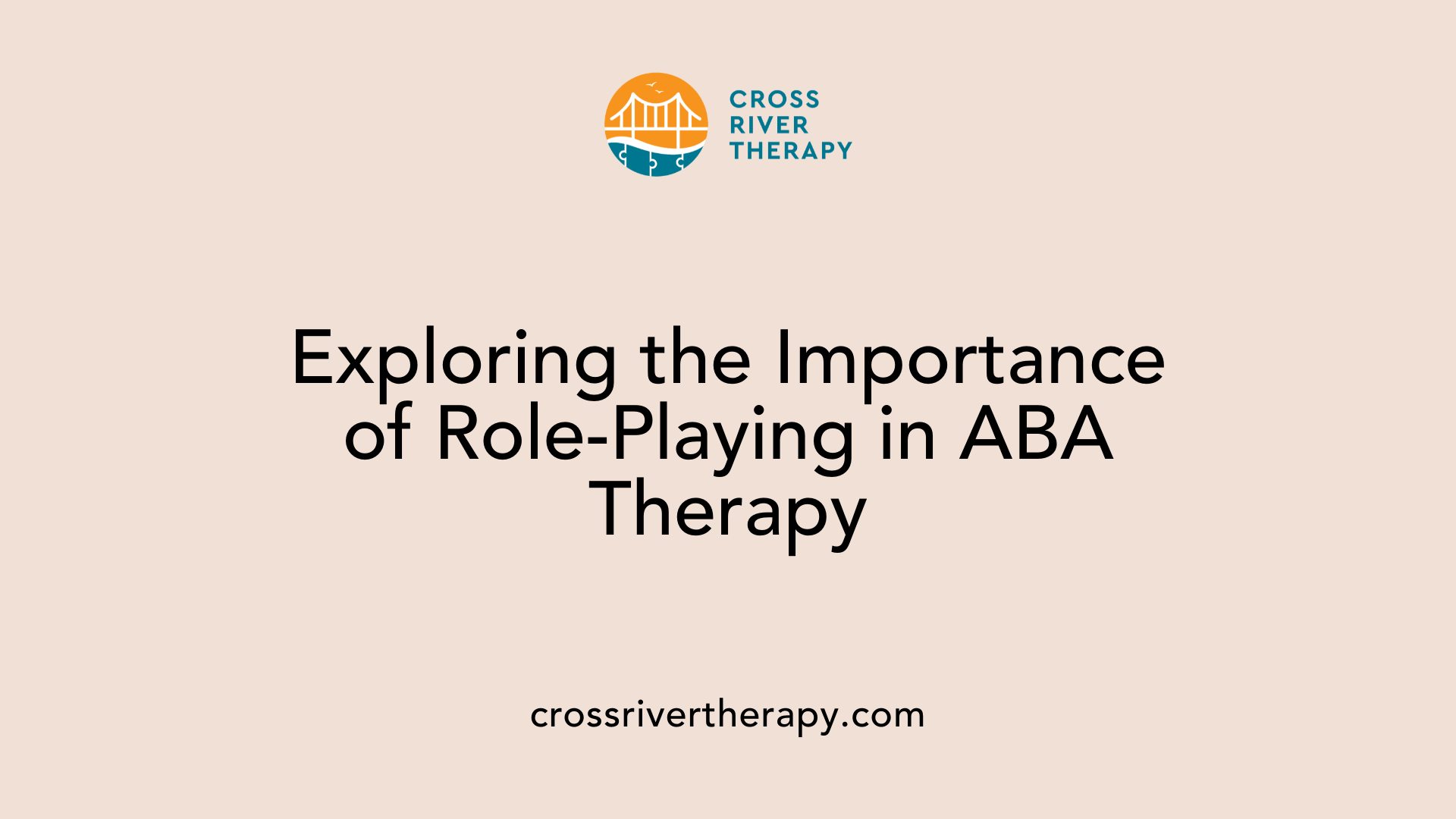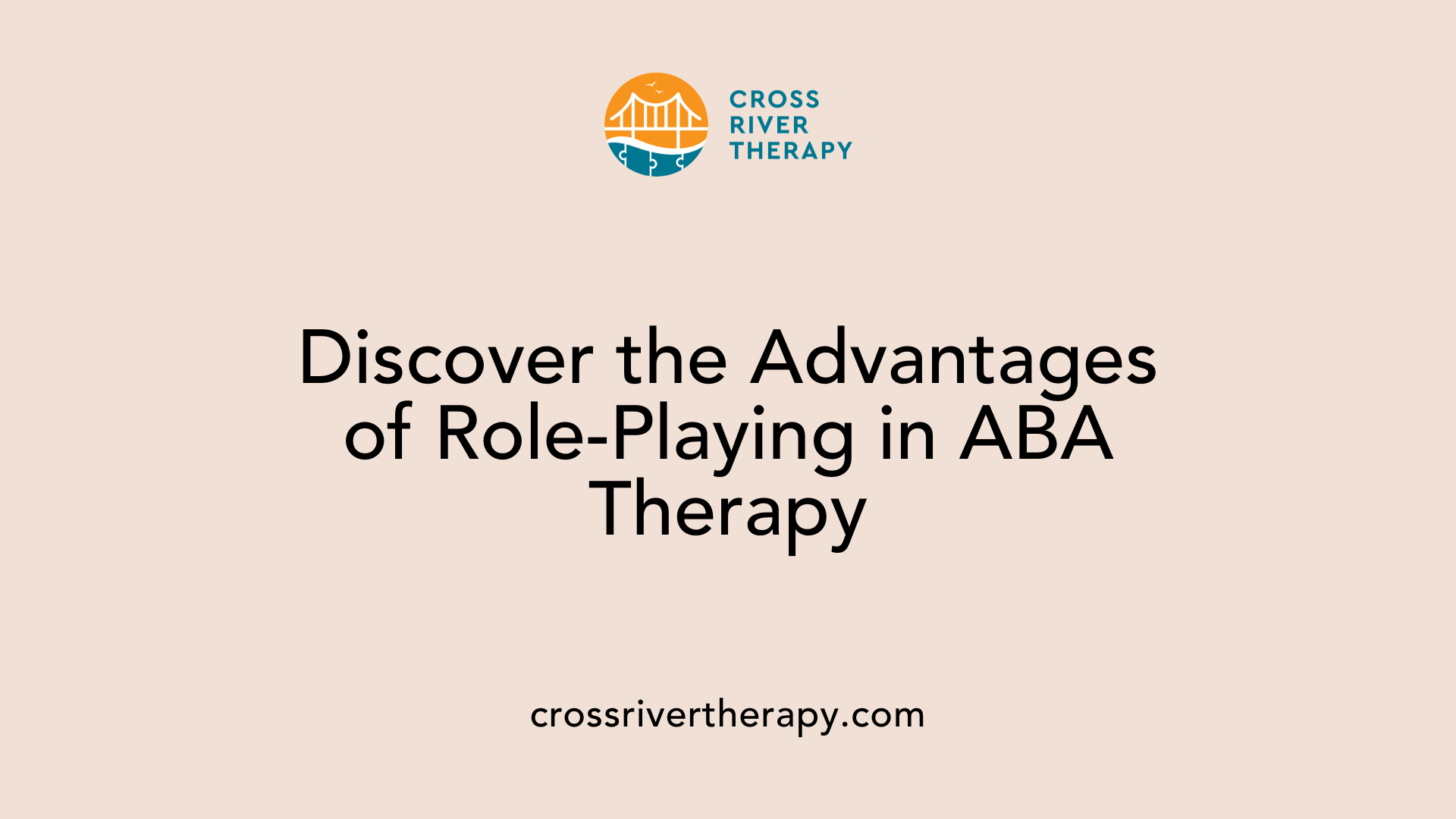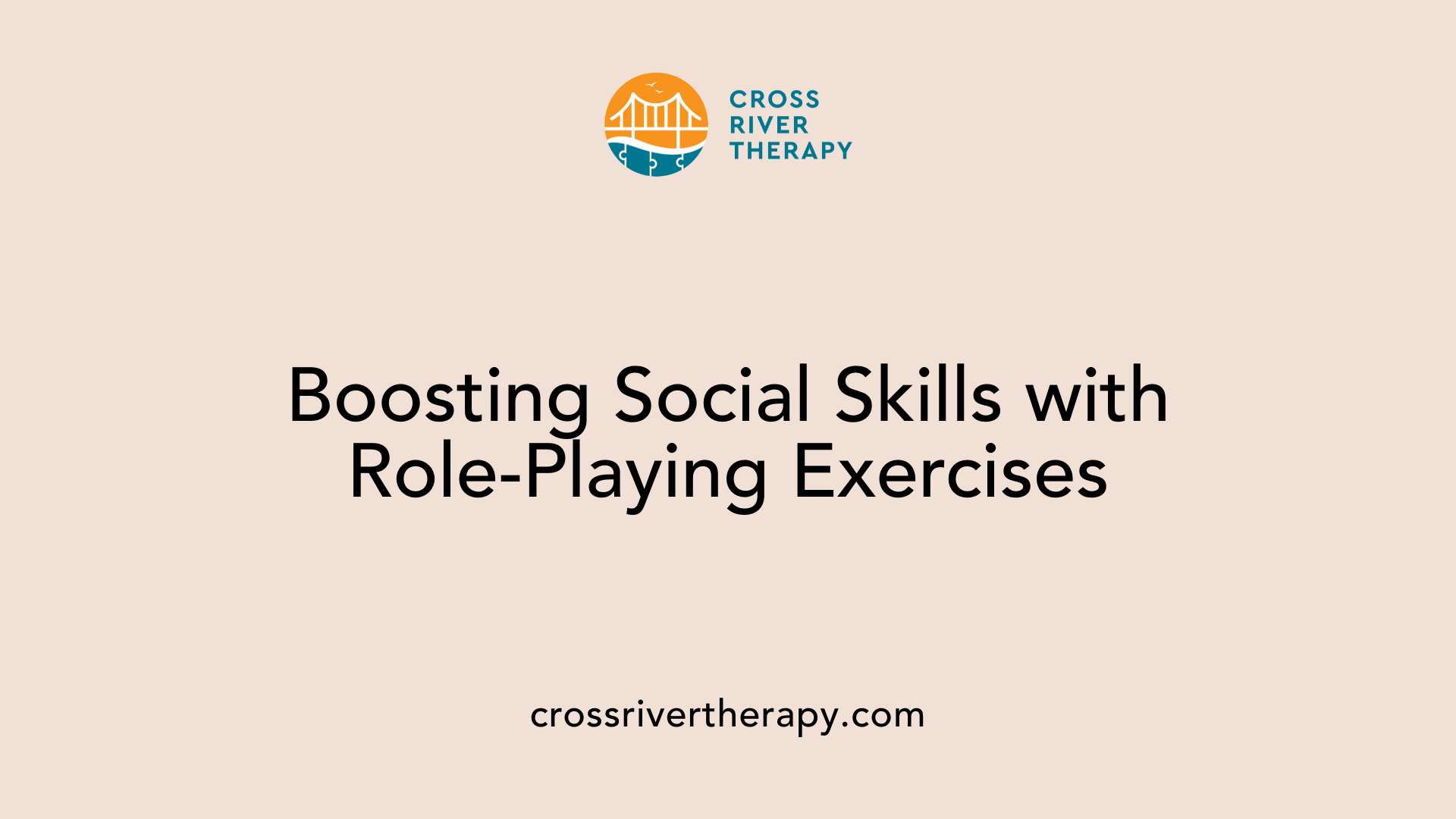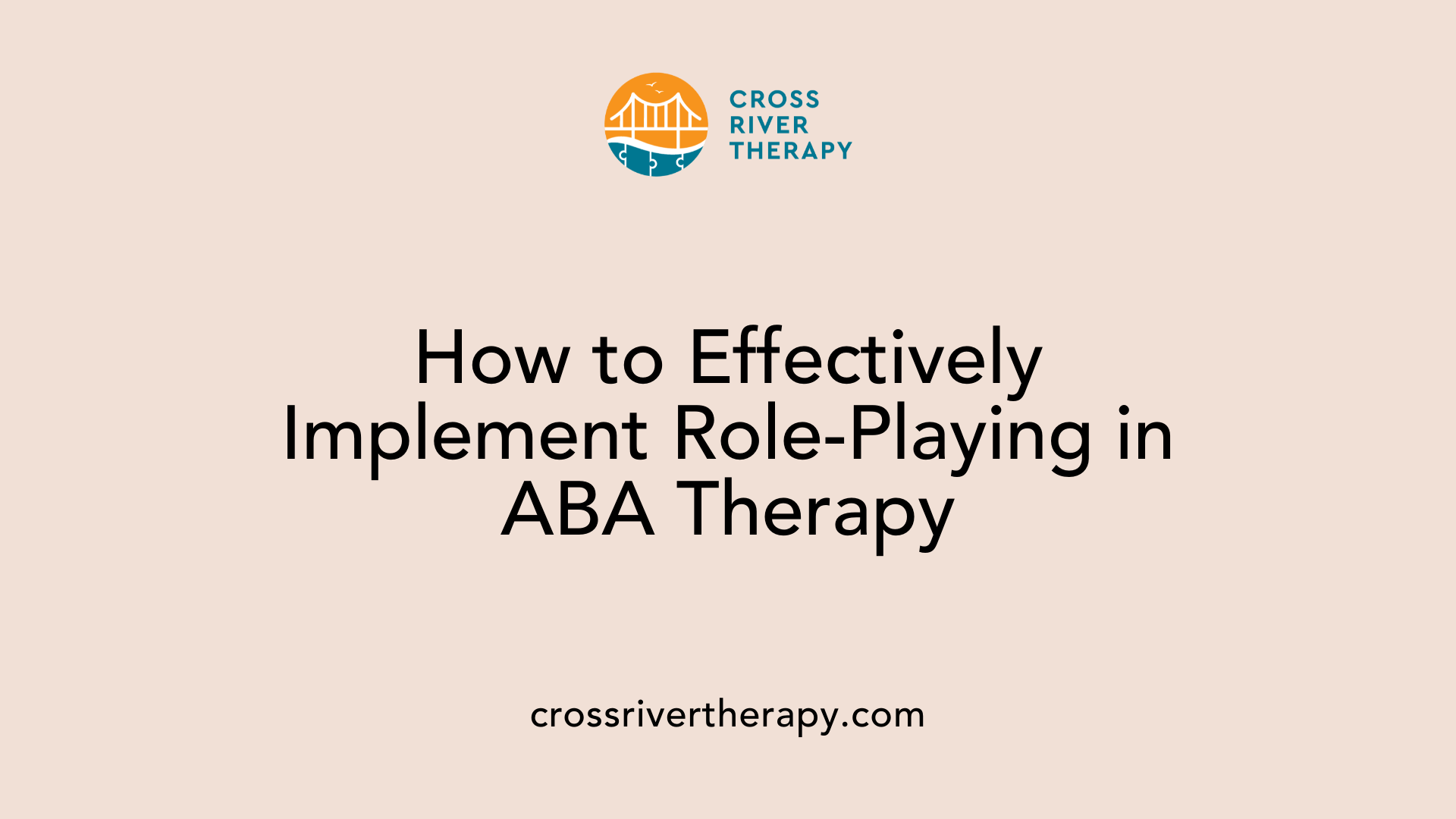The Role of Role-Playing Exercises in ABA Therapy
Harnessing Role-Playing to Boost Social Skills in ABA Therapy
Understanding Role-Playing in ABA Therapy
Role-playing is an innovative, evidence-based technique utilized within Applied Behavior Analysis (ABA) therapy, especially for individuals with Autism Spectrum Disorder (ASD). This method involves acting out social situations, which helps children learn and practice essential social skills in a structured and supportive environment. This interactive approach paves the way for improved communication, empathy, and problem-solving abilities, facilitating children’s adaptation to real-life social dynamics. In this article, we explore the multifaceted benefits of role-playing exercises, their implementation strategies, and their critical role in developing social competencies in ABA therapy.
The Significance of Role-Playing in ABA Therapy

What is role-playing in Applied Behavior Analysis (ABA) therapy for autism?
Role-playing in Applied Behavior Analysis (ABA) therapy is a valuable strategy that enables children with autism to practice and enhance their social skills in a safe environment. By acting out various scenarios, children learn to navigate real-life interactions, such as greeting others and initiating conversations, which fosters critical social competencies such as empathy and perspective-taking.
Engaging in role-playing not only supports skill development but also builds trust and rapport between the child and the behavior technician. This relationship contributes significantly to creating a comfortable learning atmosphere, encouraging children to participate more actively in therapy.
Additionally, role-playing activities are often tailored to match a child's interests, making the learning experience more relevant and engaging. For instance, scenarios might involve situations familiar to the child, which reinforces their willingness to learn and practice new skills.
By incorporating role-playing, therapists effectively facilitate the generalization of learned skills to real-life situations, ultimately aiding in the child’s social development.
Building trust and rapport through role-play
Role-playing also serves as an excellent tool for building rapport between therapists and their clients. The safe, structured nature of role-play allows the child to express themselves without the pressure of real-world consequences. This safe space is crucial for emotional growth and encourages open communication.
During role-play sessions, children receive individualized feedback and positive reinforcement, which bolsters their confidence and enhances their willingness to engage in social interactions.
Furthermore, the playful aspect of role-playing reduces anxiety and helps children focus on learning. Practicing scenarios multiple times ensures that the lessons stick, allowing children to develop automatic, appropriate responses over time, essential for improving their overall social competence.
Benefits of Role-Playing in ABA Therapy

What are the benefits of using role-playing in ABA therapy?
Role-playing in ABA therapy offers numerous benefits that enhance the overall therapeutic experience. It improves communication skills by providing children the chance to practice dialogues in a safe environment, promoting effective expression. Children learn to convey their thoughts and feelings, which is crucial for their social interactions.
Moreover, role-playing activities build problem-solving abilities by allowing children to navigate various scenarios. This helps them understand social norms, fostering greater empathy towards peers. By acting out different situations, children learn to recognize emotions in others and respond appropriately, which is vital for building relationships.
Additionally, role-playing engages children more effectively, reducing resistance and increasing motivation. This enthusiastic participation leads to better skill retention over time. These sessions create a fun atmosphere where learning feels enjoyable rather than daunting.
By simulating real-life situations, role-playing prepares children with autism for actual social interactions. This method equips them with essential life skills that extend beyond therapy sessions, such as turn-taking, sharing, and initiating conversations.
Overall, the structured yet playful nature of role-playing not only aids in learning but also contributes to emotional growth and social competence, ultimately enhancing the quality of life for children with autism.
Enhancing Social Skills Through Role-Playing Exercises

How do role-playing exercises enhance social skills in children with Autism Spectrum Disorder (ASD)?
Role-playing exercises play an essential role in improving social skills for children with Autism Spectrum Disorder (ASD) by offering a safe and structured space to practice interactions. These exercises help children simulate real-life situations where they can learn to communicate effectively and recognize social cues.
One effective method of role-playing is through tabletop role-playing games (RPGs), which, while being fun, teach valuable social lessons. In games similar to Dungeons and Dragons, children collaboratively navigate through scenarios that require teamwork, problem-solving, and empathy. This interactive format fosters peer connections and encourages cooperative storytelling, contributing to a sense of community among participants.
The enjoyment derived from these role-playing activities enhances engagement, often resulting in children acquiring new social skills without even realizing it. By focusing on fun learning experiences, children are more likely to embrace challenges and develop increasingly complex social abilities.
Benefits of Role-Playing in Therapy
- Social Connection: Immediate opportunities for children to interact, reducing feelings of isolation.
- Skill Development: Practice in cooperation, turn-taking, and patience during gameplay.
- Emotional Growth: Understanding and managing emotions in social contexts.
Overall, role-playing exercises not only facilitate the acquisition of social skills but also contribute significantly to the child’s emotional and academic growth. They enable children to rehearse essential interactions in a controlled environment, thus preparing them for real-world applications.
The Role of Peer Play in ABA Therapy

What role does peer play have in ABA therapy for developing social skills?
Peer play is vital in ABA therapy for nurturing social skills. It establishes a structured environment where children can safely interact with others, facilitating real-world practice of social behaviors. Therapists often design these interactions to reinforce skills through immediate feedback, helping children grasp complex tasks like starting conversations and sharing.
The tailored nature of ABA therapy enhances its effectiveness. Interventions are adapted to align with each child's interests and goals, which significantly boosts their motivation during play. Here’s a closer look at the benefits of peer interactions in ABA therapy:
| Benefit | Description | Impact on Development |
|---|---|---|
| Reinforcement of Social Skills | Real-time practice aids in refining abilities. | Improved confidence and mastery of social interactions. |
| Emotional Growth | Exposure to peer dynamics fosters empathy and emotional regulation. | Enhanced emotional responses in social contexts. |
| Cognitive Development | Engaging with peers encourages critical thinking and problem-solving. | Broader understanding of social cues and roles. |
| Increased Engagement | Tailored activities ensure that children remain interested. | Higher participation and enjoyment in learning. |
| Development of Cooperation Skills | Play-based games promote sharing, turn-taking, and joint play. | Essential foundations for building relationships. |
Overall, incorporating peer play into ABA therapy not only improves social skills but also aids in the emotional and cognitive development of children. By focusing on peer interactions within a therapeutic context, children are better equipped for positive social experiences outside of therapy.
Implementing Role-Playing in ABA Therapy

How do you implement role-playing techniques in ABA therapy sessions?
Implementing role-playing in ABA therapy involves several structured steps aimed at enhancing social skills in children with autism.
First, therapists identify specific social skills to target, such as initiating conversations or understanding nonverbal cues. This ensures that the role-playing scenarios are directly relevant to the child’s needs.
Next, therapists design realistic scenarios that reflect these interactions. For example, they might create situations like meeting a new friend at school or ordering a toy in a store. Visual aids like printed scripts or picture cards can also be used to better guide the child through these scenarios.
During the role-play, the therapist models appropriate behaviors, setting a clear example. Positive reinforcement plays a critical role; immediate praise or a reward follows when the child demonstrates desired skills, reinforcing learning and encouraging further participation.
Additionally, reviewing recorded sessions can offer valuable feedback for both the child and the therapist. This practice not only helps in assessing skill mastery but also ensures that learned behaviors are generalized and retained across various situations. Feedback sessions can highlight what went well and areas for improvement, fostering self-reflection.
By following these structured steps in role-playing, therapists can effectively contribute to the social development of children with autism, creating a safe and enjoyable learning environment.
Examples of Role-Playing Activities in ABA Therapy
Can you provide examples of role-playing activities used in ABA therapy?
Role-playing activities in ABA therapy serve as an effective method for teaching social skills to children with autism. These activities allow children to practice social scenarios in a controlled environment, promoting communication and emotional understanding.
Common examples of role-playing exercises include:
- Greeting someone: Practicing how to say hello and introduce oneself to peers or adults.
- Ordering at a restaurant: Simulating dining experiences to enhance conversational skills and interaction in public settings.
- Making small talk: Engaging in light conversation to improve social comfort and language fluency.
- Dealing with conflict: Role-playing ways to manage disagreements and work toward resolutions.
These scenarios help children simulate real-life situations safely, fostering improvement in their communication capabilities.
How are props and games incorporated?
Using props and games can significantly enrich the learning experience in ABA therapy. Engaging tools such as puppets, dolls, or card games can make role-playing more enjoyable and interactive. This not only captivates children's attention but also facilitates their engagement in the therapeutic process.
Adult modeling of social responses adds another layer of learning, where therapists demonstrate appropriate behaviors before children enact them. Structured resources like social stories and emotion identification games complement role-playing by reinforcing desired skills.
Through these methods, role-playing in ABA therapy becomes a fun and effective way to enhance children's social skills, making the learning process more dynamic.
Role-Playing as Evidence-Based Practice in ABA
Are role-playing exercises considered evidence-based practices in ABA therapy?
Yes, role-playing exercises are considered evidence-based practices in ABA therapy. They play a crucial role in enhancing social skills and preparing individuals for real-world interactions by engaging children in immersive scenarios.
These exercises allow children with autism to practice communication and social skills in a supportive environment. By simulating real-life situations, role-playing promotes the transfer of learned behaviors to daily life, enabling children to generalize skills effectively.
In addition to social skill development, role-playing can help reduce unwanted behaviors. Through guided scenarios, children can explore appropriate outlets for expression. This proactive approach to skill-building supports emotional regulation and fosters resilience in various peer interactions.
Overall, the incorporation of role-playing into ABA therapy strengthens learning experiences while enhancing confidence, communication, and cooperation.
What are the therapeutic benefits of role-playing in ABA?
Role-playing offers several therapeutic benefits, including:
- Skill Reinforcement: Children can practice and strengthen desired social interactions.
- Emotional Understanding: Scenarios that mimic real-life situations foster emotional regulation and empathy.
- Confidence Building: Practicing in a safe environment encourages willingness to participate in social situations.
- Behavioral Feedback: Constructive feedback helps improve responses and reinforces positive behavior.
Ultimately, role-playing serves as a vital tool in strengthening the social competencies of children with autism, aiding their overall development in a fun, engaging manner.
Tailoring Role-Playing to Individual Needs
Customization of Scenarios
Role-playing in ABA therapy is not a one-size-fits-all approach. It can be highly customized to meet the individual needs of each child. By starting with an initial evaluation of social abilities, therapists develop structured scenarios that align with the child's current skills and challenges.
Adaptation to Child's Interest
Incorporating the child's interests into role-playing scenarios keeps them engaged and motivated. For example, if a child enjoys animals, scenarios could involve a veterinary visit or a trip to the zoo. This adaptability makes the practice not only relevant but also enjoyable, enhancing the learning experience.
| Customization Aspect | Method | Benefit |
|---|---|---|
| Scenarios | Tailored to social skills needed | Focuses on relevant skills |
| Child's Interests | Incorporating favorite themes or activities | Enhances engagement and motivation |
| Structured Feedback | Guided discussions after role-play | Reinforces learning and builds confidence |
Challenges and Solutions in Role-Playing Exercises
Therapist Guidance
In ABA therapy, the role of the therapist is crucial. They begin by guiding children through structured role-playing scenarios, modeling the behaviors to ensure clarity. This initial support helps establish a foundation. However, as children gain confidence, therapists gradually reduce their involvement, encouraging independence. The challenge here lies in finding the right balance—too much guidance can stifle a child's ability to apply learned skills spontaneously.
Balancing Structure and Spontaneity
Role-playing exercises thrive on structure, but introducing spontaneity is equally important. Structured scenarios provide a safe environment for practice, while spontaneous role-plays prepare children for real-life unpredictability. The challenge is in knowing when to transition from structured to spontaneous exercises. Regularly mixing both approaches fosters adaptability, allowing children to respond appropriately in various social contexts. This balanced strategy strengthens their social competence and enhances engagement in the learning process.
Conclusion: Embracing Role-Playing in ABA Therapy
Role-playing is a pivotal element in Applied Behavior Analysis (ABA) therapy, particularly for working with children with Autism Spectrum Disorder (ASD). By providing a safe and structured environment, role-playing empowers children to practice essential social skills and boosts their confidence in real-world interactions. By fostering communication, empathy, and problem-solving skills, this interactive technique lays the groundwork for meaningful social integration, enhancing both the therapeutic process and the daily lives of children with autism. Embracing this technique invites caregivers and educators to adopt a proactive approach in the social development of children, ensuring a supportive journey towards effective social engagement.
References
- How ABA Therapy Enhances Social Skills in Children with ASD
- The Power Of Play In ABA Therapy - Willow Reach Behavior Services
- 7 Real-World ABA Therapy Examples, Activities & Their Benefits
- 10 ABA Activities to Boost Your Child's Social Skills
- Role-Playing Playdate Practice for Children with Autism
- ABA Therapy at Home | Social Skills Activities for Children ADS
- Role play practice in social skills work for children with ASD. How to ...
- Role-Playing - an overview | ScienceDirect Topics



